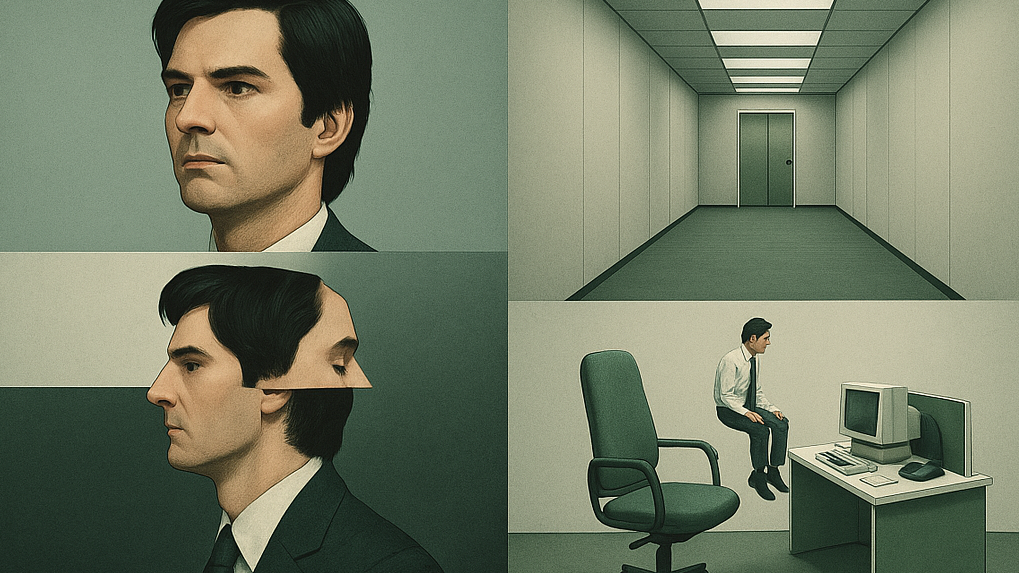
Decoding Severance: Symbolism and Hidden Meanings
Severance is rich with symbolism that deepens its exploration of identity, corporate control, and the fragmentation of the self. The show's creators have layered meaning throughout its visual landscape and narrative, rewarding attentive viewers with a tapestry of metaphors that enhance the viewing experience.
The Severed Floor as Mental Compartmentalization
At its core, the severance procedure serves as an elaborate metaphor for the compartmentalization many people practice in their working lives. The physical separation of work memories from personal ones literalizes the psychological boundaries we create to manage different aspects of our identities. This separation raises profound questions about the nature of the self—if your memories define you, are you still the same person when half of those memories are inaccessible?
Numbers and Data Refinement
The mysterious work performed by the Macrodata Refinement team involves identifying and sorting "scary" numbers, a task that remains deliberately opaque. This work symbolizes the often meaningless-seeming tasks of corporate employment, where employees may not understand the larger purpose of their labor. The emotional response the numbers trigger—creating a peculiar sensation when the correct ones are identified—suggests a connection to subconscious or emotional processing that the severed employees can't fully comprehend.
Food as Reward and Control
Food appears repeatedly as a symbolic element throughout the series. The meager rewards offered to employees—finger traps, waffle parties, melon bars—are infantilizing and reflect how corporations use trivial perks to maintain employee satisfaction without providing meaningful benefits or autonomy. The coveted egg bar represents a slightly elevated privilege, showing how organizations can use minor status symbols to create hierarchy and competition among workers.
The perpetuity wing's display of Kier Eagan eating alone carries religious overtones, reminiscent of the Last Supper but twisted to emphasize isolation rather than community. When Dylan steals the crystal paperweight in defiance, it's significant that he hides it in the bathroom's paper towel dispenser—a small act of rebellion concealed in one of the few places free from surveillance.
The Four Tempers
The philosophy of Kier Eagan divides human nature into four "tempers": woe, frolic, dread, and malice. This classification system, which appears in artwork throughout Lumon headquarters, represents the company's attempt to reduce human complexity to manageable categories. The refinement work itself might be a form of emotional processing related to these tempers, suggesting that Lumon is harvesting or manipulating the emotions of its employees in some fundamental way.
The painting depicting Kier taming these tempers visualizes the corporate suppression of authentic human emotion in favor of productive compliance. When employees begin questioning their situation, they're exhibiting the very tempers that Lumon seeks to control.
Topography and Maps
The show frequently references maps and landscapes. Mark's hobby of building model replicas of historic sites represents his subconscious attempt to reconstruct memory and meaning. The topographical maps in Lumon's security office hint at deeper connections between physical and mental landscapes. When Helly attempts to map the Lumon facility, she's not just trying to understand her physical environment but also the boundaries of her constrained existence.
Religious and Cult Imagery
Lumon Industries incorporates numerous religious elements that position work as a form of devotion. The handbook functions as scripture, complete with opaque parables and rules. Kier Eagan is portrayed as a messianic figure, his wisdom preserved in holy text and his image venerated in shrine-like spaces. The break room, with its ritualized confession ("I am sorry for the harm I have caused this company"), functions as a form of corporate penance.
The reverence employees are expected to show toward Lumon's founders mirrors religious devotion, suggesting that corporate culture has replaced traditional spiritual frameworks in this world. The "perpetuity wing" itself evokes eternal life, promising a form of immortality through corporate legacy.
Water and Rebirth
Water imagery appears at pivotal moments throughout the series. Mark's innie is "born" each workday as he emerges from the elevator, a transition preceded by a flood-like rush as his work consciousness surfaces. The severed floor exists below ground level, submerged like the subconscious mind. When characters begin questioning their situation, they are metaphorically "coming up for air" and seeking the surface of a fuller existence.
These layers of symbolism transform Severance from a science fiction thriller into a rich text that rewards careful analysis. By embedding these meaningful patterns throughout the narrative, the creators have built a world that mirrors our own corporate structures while questioning the psychological bargains we make in service to work.